We Bought a House Together. We Broke Up. Now What?

Although most attorneys would advise against an unmarried couple purchasing real property together, a common issue we see is how to deal with a property purchased by an unmarried couple.
Ohio property law recognizes two groups of people: married people and unmarried people. With no laws protecting unmarried, cohabitating individuals, going through a split with your partner may become an extremely complex, confusing, and frustrating situation.
When faced with this situation, there are essentially three options:
One Party Purchases the Other Party’s Interest
One party can transfer their interest in the property to the other party via a quitclaim deed. If there is no mortgage, this process is relatively easy and potentially only costs the amount for the preparation of documents and recording fees. However, even without a mortgage, things can get complicated when the party leaving feels they are entitled to something for handing over the property- either from the time spent to care for or improve the home or actual monetary contributions made to the home. The parties may have to agree to an amount to be paid to the party leaving in exchange for signing the deed to the staying party.
If both parties are responsible for the mortgage, the party who plans to remain in the property can refinance the loan solely into his/her own name, releasing the other party from any obligation. The party leaving the property would then sign the deed, transferring his/her interest to the other party. You should always contact your mortgage company before prior to taking this action to make sure that you can refinance adequately and also to get their approval for the quitclaim deed. Many mortgages have clauses in them that can bring the entire amount due and owing if a party quitclaims their interest without approval.
The setback we often see with this option is that the party that intends to stay does not qualify for the mortgage amount on their own and thus cannot refinance the loan into his/her name as the sole borrower. Furthermore, we are now seeing parties that want to keep and remain in the property, but do not want to refinance because of the increase of interest rates in the past few years. Those that purchased property while the interest rates were historically low do not want to now refinance at a much higher rate.
Sell the Property
If neither of you wants to stay in the house, or neither qualify for a mortgage on your own (eliminating refinancing as an option), you can agree to jointly sell the property. This is often the least complicated solution. If there is equity in the house, there can be contention on how to split this equity. We often see this issue arise when there were improvements made to the property and one party has put much of their own time or money into making the improvements. This often leads to one party wanting a bigger percentage of the equity. So long as you can agree on a percentage split of the proceeds after the sale of the house, this can allow you to have an easy split not only from the property, but also from your partner.
Partition
The only other option is to petition a court to partition the property. Partitioning a property is the process of determining which owner owes how much of a property, and then either forcing one owner to buy the other out, or selling the property and splitting the proceeds based on ownership.
This option is often considered the last resort because it can be costly, complicated, and time consuming as the courts sort out the facts and make determinations. The property will ultimately be sold judicially, and the court will determine how any proceeds will be split between the parties.
Because of the lack of protections for unmarried people purchasing property together, we highly advise against the purchasing of property between unmarried people, with both being on the deed and mortgage. However, if you do find yourself in this situation, and the relationship has ended, please reach out to our firm to discuss your situation and the options. You have options and we are here to help.
- Published in Real Estate, Real Property
Solar Panels and Community Associations

As energy costs increase, technology advances, and people become more concerned about environmental conservation, more people are considering installing solar panels. This is becoming a bigger issue within communities which are part of a condominium owners’ associations or homeowners’ associations. New legislation addressing solar panels in community associates was enacted fairly recently (September 2022).
Solar Panels in Condominium Communities
Condominium declarations may continue to completely prohibit solar panels. If a condominium declaration does not prohibit solar panels, Section 5311.192 of the Ohio Revised Code permits unit owners to install them on the roof of their units if there is not another condominium unit above or below them, and one of the following is applicable:
- The unit includes the roof and the cost of insuring, maintaining, repairing and replacing is the responsibility of the owner and is not a common expense; OR
- The condominium declaration specifically allows for and regulates the types and installation of solar energy collection devices in the common or limited common elements and determines who is responsible for the cost to insure, maintain, repair, and replace such devices.
In communities where solar panels are permitted, the board can establish reasonable restrictions concerning the size, place, and manner of placement of soler panels.
Solar Panels in HOA Communities
Similar to the law on condominiums, solar panels may be prohibited by the Declaration of Covenants, Conditions and Restrictions of a homeowners’ association. If the declaration does not prohibit solar panels, owners may install solar panels on their lots as long as they are responsible for the maintenance and repairs of the areas on which the solar panels are installed. In communities with HOAs, is likely that an owner is responsible for the roof of the structure and all parts of the lot. HOA boards also have the right to establish reasonable restrictions concerning the size, place, and manner of placement of solar energy panels.
It is important for HOA and COA boards to determine whether they would like solar panels to be permitted or not, and if they will be permitted, the restrictions that may need to be established. The association’s documents may need to be amended to establish and protect the desire of the community regarding solar panels.
Richter Law can help answer questions and address concerns you may have about solar energy collection devices in your community and assist with any document amendments.
Easements In Ohio

An easement is a right to cross or otherwise use someone else’s land for a specified purpose. It is a non-possessory interest in land that allows the holder of the easement to have access to or use the property belonging to someone else. In Ohio, easements can be granted in writing by agreement between the parties. The easement is then recorded with the county recorder. The dominant estate is the parcel of real property that has an easement over another piece of property (known as the servient estate).
When certain requirements are met, there are other ways an easement can be created. In Ohio, there are 3 types of these easements: an easement implied by prior use, an easement implied by necessity, and a prescriptive easement.
Easement Implied by Prior Use
An easement implied by prior use is established by satisfying 4 elements.
- A severance of the unity of ownership in an estate. This occurs when one owner sells only part of his whole property to another resulting in property that was once owned by one owner, now has part of it owned by another.
- Before the severance, the use giving rise to the easement shall have been so continuous and obvious that it appeared to be permanent.
- The easement must be reasonably necessary to the beneficial enjoyment of the land granted or retained.
- The use of the property that is the subject of the easement is continuous, rather than temporary or occasional use. *
Easement Implied by Necessity
An easement implied by necessity requires proof that there is no other way to get to and from the property, even if the way of getting to and from is less convenient and would require great expense and work to make it serviceable.
Prescriptive Easement
In order to obtain a prescriptive easement, a landowner using adjacent property must prove, by clear and convincing evidence, that such use was open, notorious, adverse to the neighbor’s property rights, continuous, and in place for at least twenty-one years. A prescriptive easement cannot exist if the landowner gave permission to use the property in question because it is not adverse to the landowner’s rights. (See more about adverse possession here).
The laws pertaining to easements are complex. Easement agreements can be difficult to understand and disagreements over easements can be difficult and costly to resolve. At Richter Law, we can help you review easement agreements and assert and protect your rights in easement disputes.
*See Kiko v. King Mountain LLC, 7th Dist. Monroe No. 14 MO 9, 2015-Ohio-2688
- Published in Real Estate, Real Property
Handling Hoarders and Hoarding in the Community

Hoarding by a member of the community has become an often-discussed topic in recent years, especially after the addition of hoarding to the Diagnostic and Statistical Manual of Mental Disorders (DSM-5). When a community member is hoarding, or suspected of hoarding, the community association board (HOA or COA) must address the concerns of the residents while also respecting the rights of the suspected hoarder.
Signs of hoarding may include: foul odors, insect or rodent infestation, dirty or constantly closed window coverings, visible blockage of windows, dirty windows, and noticeable stacks of clutter. It is important for the Board to take action if there is suspecting hoarding in the community to protect the health and safety of the residents within the community.
Condominium Owner Associations and Homeowners’ Associations have governing documents that prohibit residents from creating safety hazards and nuisances. Most association documents require residents to maintain their homes in safe and sanitary conditions. HOA and COA Boards should create rules that discourage residents from creating and maintaining unsafe conditions and allowing unsanitary and potentially hazardous situations in their homes. Having these rules in place allows Boards to enforce the rules and handle a hoarding situation in the same way any other rules would be enforced. However, while a Board has a duty to address the hoarding situation and try to come to some resolution, it must also be sensitive to and balance the rights of the owner suspected of hoarding.
Since hoarding is a medically recognized mental disability, there are both federal and state legal protections for the owner suspected of hoarding. Therefore, a person who suffers from hoarding may be entitled under the Fair Housing Act and Ohio Revised Code §4112.02 to reasonable accommodations to afford the owner equal opportunity to use and enjoyment of their home. A successful reasonable accommodation plan often involves collaboration between the owner, the HOA/COA Board, mental health professionals, social workers, and/or other advocates. Family members and friends may also play an important role in assisting the owner with compliance of rules.
When facing a hoarding situation, a board must balance its duty to maintain safety and sanitation standards for the entire community with the rights of the owner. Creating rules that aid in prevention of hoarding conditions and enforcing them fairly and uniformly and allowing a reasonable accommodation request will help the Board minimize any liability.
If you suspect there is a hoarding situation in your community, please reach out to Richter Law for assistance and guidance on how to navigate the issue.
- Published in Community Associations, Real Estate, Real Property
Adverse Possession In Ohio

If you are a property owner, you most likely have neighbors on at least one side of your property. Imagine a situation in which your neighbor could potentially gain legal title to a piece of YOUR property. This is possible under a legal concept called adverse possession. Under the legal doctrine of adverse possession, land can legally pass from the rightful owner to the trespasser under very specific conditions. When people hear the term ‘adverse possession’, they often think of trespassing squatters. However, the large majority of adverse possession cases in Ohio actually involve property line disputes.
What is Required to Prove Adverse Possession in Ohio?
If a squatter lives on and cares for your property, he may have the chance to obtain that land in court. However, that is unlikely because of the specific conditions required to prove adverse possession. Thus, the reason property line disputes are often the cause of adverse possession disputes. In Ohio, a trespasser must prove use and care for the property that belongs to the other person for a time period of at least 21 years. Additionally, the possession of the property must be:
Hostile: The trespasser does not have a legal right to the property and was never given permission to use it by the legal owner.
Open and Notorious: The use of the property cannot be hidden or secretive. It has to be noticeable by the average person. The trespasser must be using the property as the legal owner would use it.
Continuous: The property must have been used by the trespasser without interruption for a period of at least 21 years. “Tacking” is allowed in Ohio, which is when adverse use of the property passes from one owner to the next. For example, if a person lives in a house and uses and maintains a piece of the neighbor’s yard for 10 years and then sells the property and the new owner uses and maintains the same piece of the neighbor’s yard for the next 11 years, this would constitute a continuous use for 21 years.
Actual: The trespasser must have been exerting some sort of control over the property, either by building a structure or by using and maintaining the property on a regular basis.
Exclusive: The trespasser must be the only person using the property. If the land is used publicly or used equally by others, it is not exclusive.
Since this can be a difficult concept to understand, here is an example. Todd Smith lives in a house located at 4389 Serenity Avenue. He purchased the property from Jeff Berry 7 years ago. The property has a workshop in the backyard that was built by Jeff Berry 25 years ago. Todd Smith’s neighbor, Jane Green, has recently had a survey done of her property located at 4391 Serenity Avenue, and it has been discovered that Mr. Smith’s workshop encroaches onto her property line. Todd Smith has a strong claim for ownership by adverse possession because both he and Jeff Berry have used the workshop for over 21 years, as seen by all of the surrounding neighbors. They have also maintained the yard around the workshop. Jane Green has lived in her property for 30 years and knew about the workshop built by Jeff Berry and has seen both he and Todd Smith use the structure and yard space.
If you have a property line dispute and are unsure of your legal rights, please contact Richter Law today for a consultation.
- Published in Real Property
Ohio Property Tax Appeals

Tax valuation is not an exact science. Due to limited time and resources, broad appraisals are made by the county auditor when determining the value of property. If you are assuming the county’s valuation of your property is correct, you could be paying more than your fair share of property taxes. You should know the true value of your property and contest the county’s value if it is wrong.
Appealing Property Taxes in Ohio
Property values can be challenged by filing a “Complaint Against Valuation” with the local county Board of Revision (BOR). The same complaint form is used statewide. These forms need to be filled out carefully and correctly because incorrect or missing information can be a cause for dismissal of the Complaint. Because Ohio pays property taxes one year in arrears, meaning for periods of time that have already passed, the BOR will be looking back in time to the previous year when determining property value.
All Complaints must be filed with the BOR by March 31. If you miss the deadline, you must file the following year. When appealing the valuation of your property, you must be able to prove your property’s fair market value. This is done by submitting probative evidence of value. Evidence typically includes comparable sales in the area, proof of a recent, arm’s length sale (sale between two or more unrelated and unaffiliated parties), or an independent appraisal conducted by a qualified appraiser.
Following the filing of the Complaint, a hearing will be scheduled. The hearings typically take place during the summer and fall months and only last about 15 to 30 minutes. The hearing is conducted in front of a panel comprised of the county auditor, county treasurer and the president of the Board of County Commissioners (or their appointees). Your local school district may also send a representative to contest your Complaint, since the school district receives a portion of property taxes. However, this is only likely to occur if you are requesting a reduction in value of at least $50,000. A decision is typically made within two to four weeks after the hearing. You can file an appeal can with the Ohio Board of Tax Appeals or the local County Common Pleas Court if you do not agree with the BOR’s decision.
Please contact Richter Law if the county has recently increased the value of your property or you feel that you are paying too much for property taxes. We can help you determine whether you should file an appeal with the Board of Revision and provide representation during the process.
- Published in Real Estate, Real Property, Uncategorized






